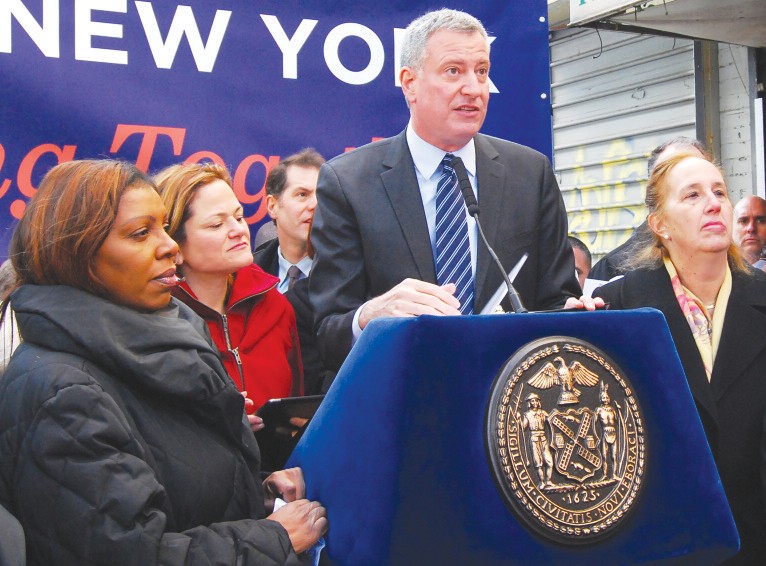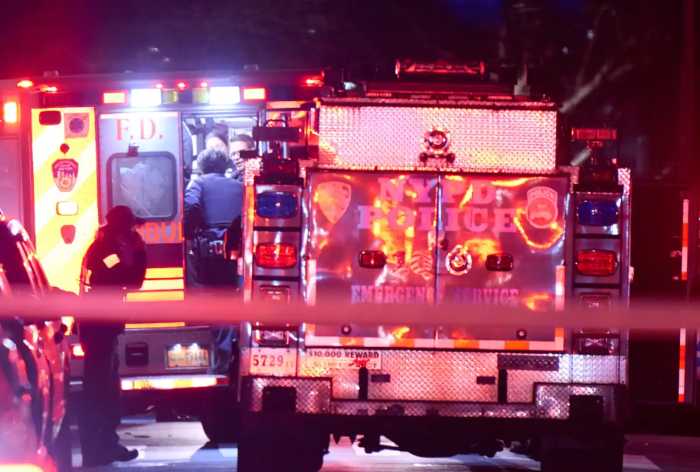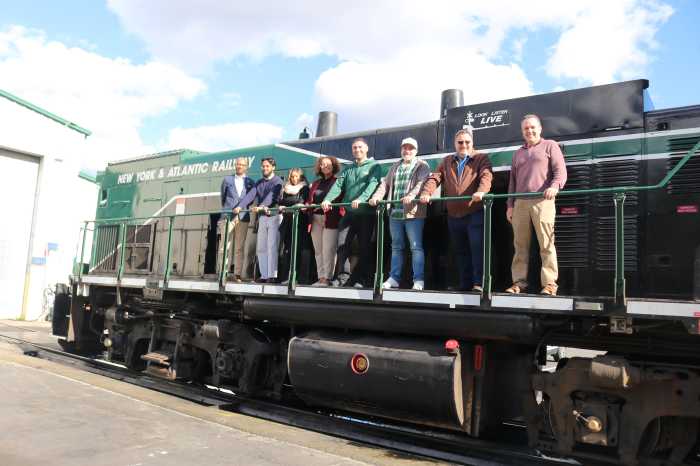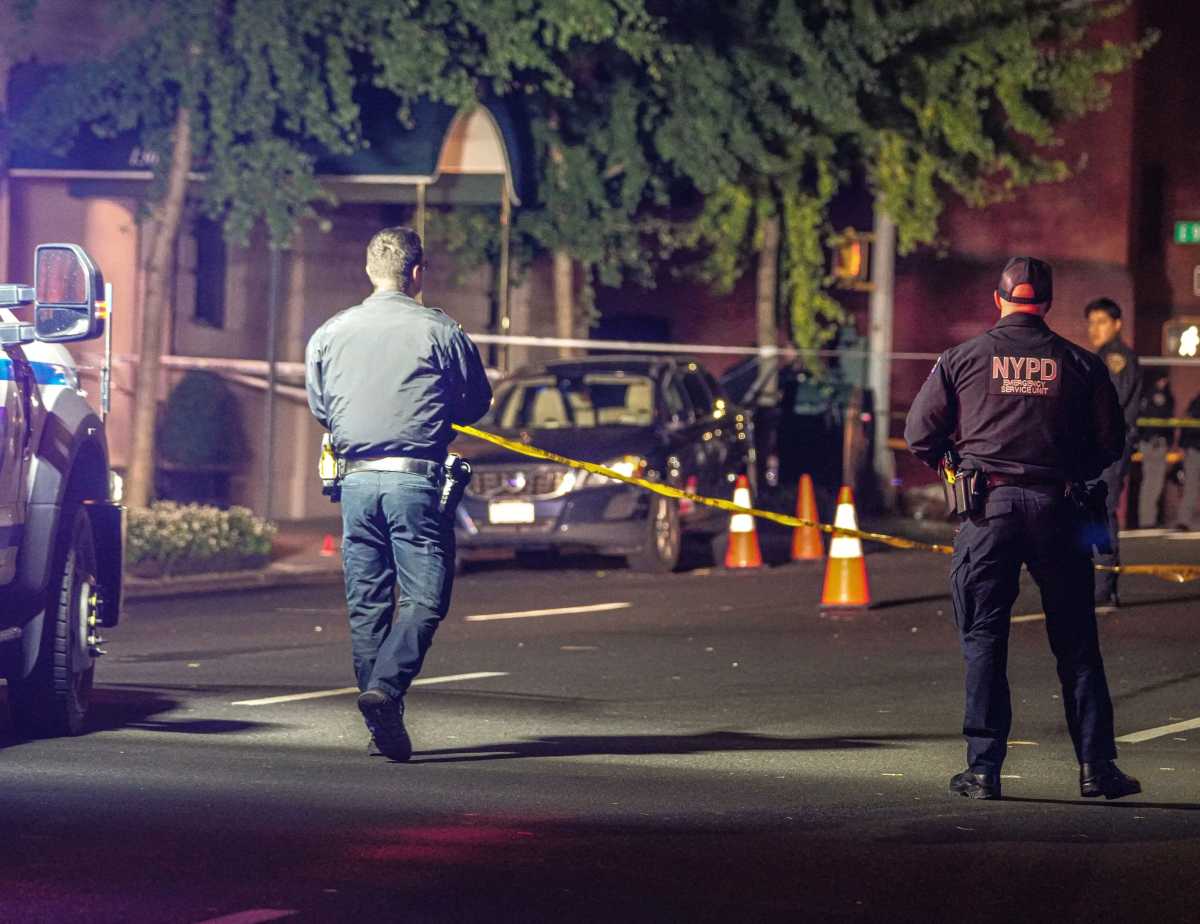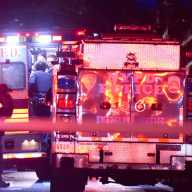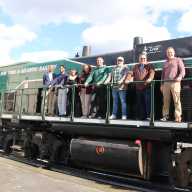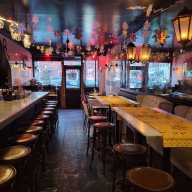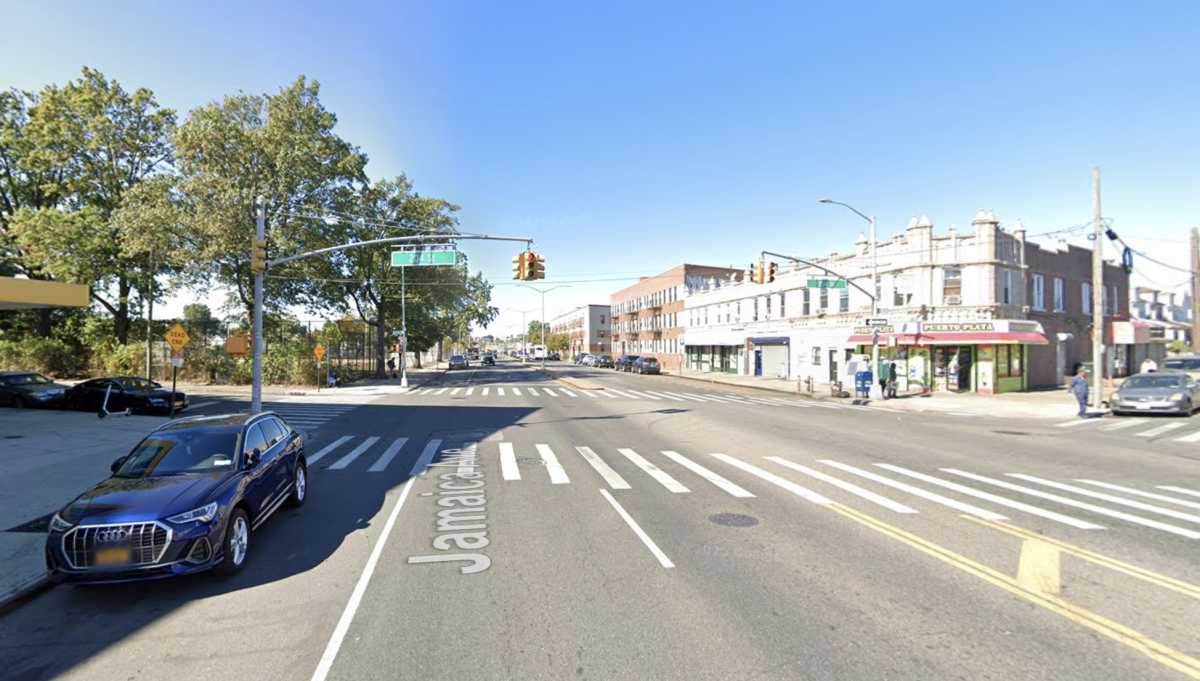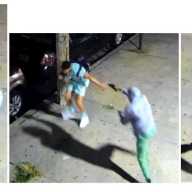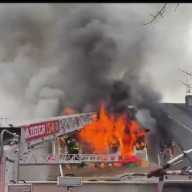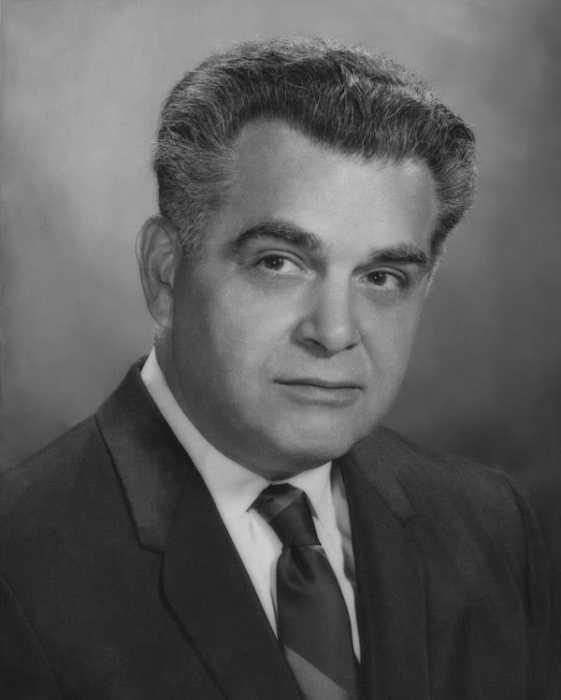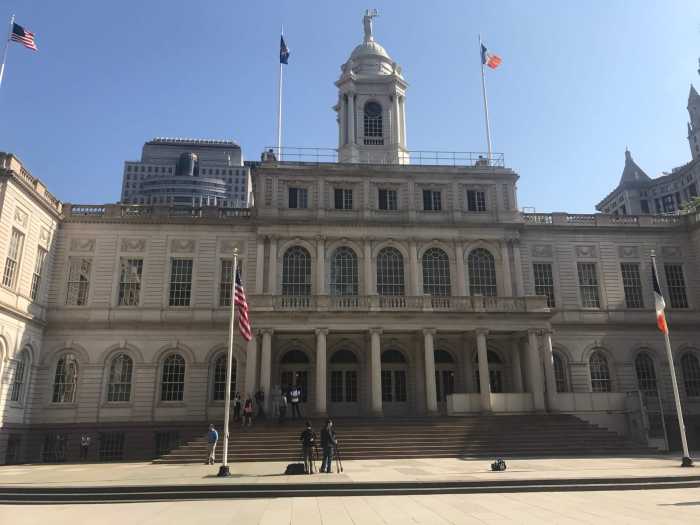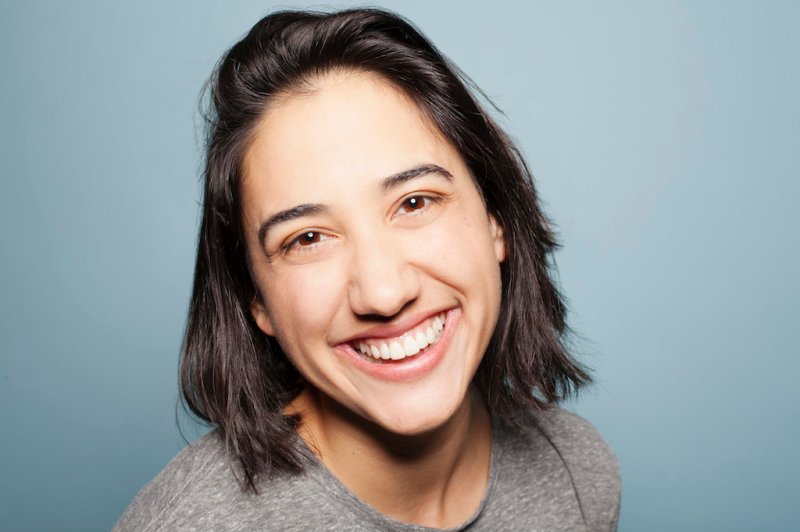Cyclists Seek Safe Passage In Woodside, Sunnyside & L.I.C.
Queens cyclists were asked to imagine the future of two-wheeled transportation in Western Queens at a forum held on Saturday, Mar. 3 at Sunnyside Community Services.

Dalila Hall and Hayes Lord of the city Department of Transportation (DOT) joined Emilia Crotty and Evan O’Neill of Community Board 2 in facilitating the event, in which groups of cycling advocates were asked to draw their proposed routes on giant maps of the area.
The DOT promised to take the ideas created at the forum and come up with a proposal to show Board 2 later this year.
Before the crowd could split into groups Lord presented an overview of the changes in bike infrastructure throughout Board 2 and the city at large.

According to Lord, “CB 2 has certainly not seen its fair share of bike infrastructure.”
“DOT’s policy is to create complete streets”-streets that are safe for drivers, pedestrians and cyclists alike.
As part of this effort, the city has added 208 miles’ worth of bike routes since 2006, in several different flavors:
– shared routes, featuring signage and what the DOT calls “sharrows”- markings on city streets that signal to drivers that their street is being shared with cyclists;
– dedicated lanes, which are 5′ wide to accommodate bikes, and are located nine feet from the curb to prevent cyclists from being hit by the doors of parked cars (a phenomenon known as being “doored”);
– buffered bike lanes, which feature a two to three-foot separation between cyclists and traffic; and
– separated lanes, which feature green pavement and sometimes physical barriers separating cyclists from traffic but come with “certain tradeoffs,” Lord stated, such as the loss of parking spaces.
“People who are indecisive about whether they want to bike, they actually like the bike lanes,” Lord said. “It’s actually the five feet of space that they feel comfortable.”
Board 2 now has 13 miles of bike lanes, as opposed to only 1.45 in 2007.
The city has also been “blanketing” community boards with bicycle parking, which also comes in several variations, from large bike shelters to smaller “hoop racks,” to curb cyclists chaining their rides to street signs and fences.
The agency is targeting subway stops and retail corridors with the shelters, but are accepting various suggestions.
Lord added that the DOT is repurposing old individual traffic me- ters by retrofitting them into “hoop racks” whenever a street is converted to the muni-meter system.
The “anti-bike people”
Not everyone attending the meeting was a fan of bicycle lanes.
Board 2’s Al Volpe and local resident Margaret Baxter spoke to the Times Newsweekly about the plan, with Baxter claiming that the meeting had an “atmosphere of privilege, that they don’t have to take any responsibility for actions.”
According to Baxter, cyclists routinely fail to follow the rules of the road, ignoring traffic lights and endangering pedestrians.
“They’re saying that they’re interested in safety. Then let’s get interested in safety,” she told the Times Newsweekly.
“This is a meeting for the pro-bike people,” Volpe stated, “but the antibike people outnumber the pro-bike people in huge numbers.”
He added that the infrastructure “doesn’t cost them a penny, not one penny … everything they’re getting is free.”
“At a minimum,” he argued, “they should have insurance.”
Group work
After Lord’s presentation, five groups were formed and asked to plot their dream scenario for bicycle lanes.
The first group, which included O’Neill and Community Board 5’s Donald Passantino, looked at various places of interest in and around the area, including LaGuardia Community College, Queensboro Plaza, Flushing Meadows-Corona Park and Roosevelt Island (soon to be the home of a new tech campus).
They also wanted increased connectivity to area bridges.
The group called for increased bike lanes on Skillman and Greenpoint avenues as well as for more lanes on the southern side of Sunnyside, south of Queens Boulevard.
Finally, they asked the DOT to improve the quality of street paving on roadways in Board 2, claiming that they cause safety issues for cyclists.
The second group, which featured bike advocate Helen Ho, also spoke of increasing connections to the Pulaski and Byrne bridges connecting Queens and Greenpoint as well as improved signage and way finding at the Queens sides of the bridges to direct cyclists around the area.
Her group also asked for improvements to bike infrastructure on Thomson, Skillman and Jackson avenues as well as 39th and Honeywell streets.
Ho also asked the DOT to consider a program of improving bike access to area schools, encouraging families to bike to school together.
Next up was a group that included bike advocate Nancy Silverman and Board 5’s John Maier.
Her group also pointed out several destinations, such as P.S. 1, La- Guardia College, Calvary Cemetery, the Hunters Point stop of the East River Ferry and the 61st Street/Woodside train hub, that could benefit from better bike infrastructure.
The group also asked the DOT to look at bike lanes on 58th Street, which could connect to Grand Avenue and Board 5.
The fourth group featured Board 5’s Michael Hetzer and local resident Peter Beadle.
This group focused on north/south connections, including 39th and 58th streets, as well as a segregated lane for 56th Road in Blissville.
“There needs to more emphasis on infrastructure south of Queens Boulevard,” Beadle implored.
Crotty helped with the fifth and final group. According to resident Steve Schofield, the group also sought support for bike lanes on 39th and Honeywell streets, as well as traffic-calming measures at Van Dan Street, and near the intersection of Greenpoint avenue and the Long Island Expressway.
This group also called for bike lanes on the replacement for the Kosciuszko Bridge.
Queens Boulevard
Many of the groups asked the DOT to consider placing bicycle lanes on Queens Boulevard. Ho’s group advocated a protected bike lane with support for family and cargo cycles, as well as slowing down the average speed of traffic on the thoroughfare.
Beadle’s group claimed a “strong belief” that cycling, as a method of transportation, should be represented on Queens Boulevard.
However, both Board 2 Chairperson Joseph Conley and City Council Member Jimmy Van Bramer stated their opinion that placing a bike lane on the state road (NY 25A) was unsafe.
Crotty told the Times Newsweekly that the implementation of a bike lane on the road would be “a huge capital project.”
“We tried to think about the closer future,” she stated.
Other ideas
Ho asked Lord to consider improvement on the Manhattan end of the Queensboro Bridge, which many cyclists claimed was unsafe due to ongoing water main construction on First Avenue.
Lord claimed that the contractor needs the space it is currently using to install the new sewers and mains; the construction will take about two years, after which the agency will consider improvements to the Manhattan end.
The Queensboro Bridge has seen a “phenomenal growth” in the number of bikes using it to cross the East River, Lord noted; the Queens side was recently the site of a massive transportation improvement project with included new bike paths.
Pols speak
City Council Member Jimmy Van Bramer, a cyclist himself, asked the DOT to examine what he called a “break” in the bike lane near the intersection of Skillman and Thomson avenues, a pathway he uses himself.
“Connectivity is a big issue for me,” he said. “There are big gaps in terms of where bike lanes end, and then you’re on your own.”
He also advocated for a bike-sharing program in Western Queens, claiming that he has made a “very, very aggressive” push for its implementation in the area.
Joseph Conley, who chairs Board 2, also stated that he was in favor of more bicycle lanes, and that the Queens West and Hunters Point South projects will have bicycle infrastructure ready for residents.
He added that “we think there are some really good opportunities” for bike shelters and rental stations on Queens Boulevard, underneath the elevated 7 train stations on 33rd, 40th and 46th streets.
Finally, he expressed hope that the DOT would explore better connections between Long Island City and Greenpoint.

